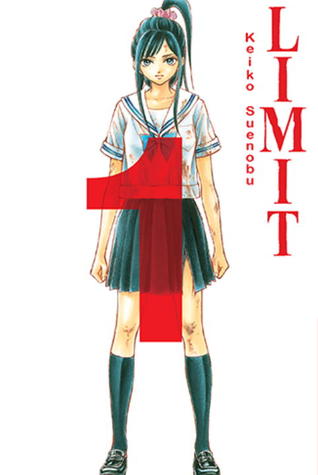By Keiko Suenobu. Released in Japan by Kodansha, serialized in the magazine Bessatsu Friend (“Betsufure”). Released in North America by Vertical.
Keiko Suenobu is a name that might be familiar to those manga readers with long memories. Tokyopop put out several volumes of her shoujo manga Life before Kodansha took their licenses away, and it was a decidedly different shoujo manga from the usual fare. Not that it didn’t feature high school girls, dating, rivalries and bullying, etc. But it also discussed topics such as suicide, self-mutilation, body hatred, and rape, and did not try to give us the usual ‘you will defeat the bullies if you get emotionally stronger!’ message that most manga do. It was quite popular in Japan, winning awards and spawning a live-action drama. And now Vertical has licensed her next project, which takes high school popularity and tosses it into the middle of the unknown wilderness.
If there’s one big issue I had with Limit, it was this: I feel the accident that causes the plot to happen should have been on Page 175, rather than Page 45. We’re introduced to a class and get a quickly sketched out plan of who’s popular and who’s unpopular, with the main characters briefly touched on. But given how much of what happens focuses on Morishige and her feelings of hatred and revenge, I wanted to know more about the class dynamics and in particular about the class’ ‘queen’, Sakura, and our heroine Mizuki. As it is, being thrown into the deep end along with Mizuki helps give a feeling of uncertainty and fear, but it also makes her rather flat. If we’d had a couple of chapters that faked us into thinking this would be a typical coming of age (albeit serious) shoujo, I think the added depth would have helped.
That said, there’s a lot to like here. Teenage drama is something that Suenobu specializes in, and it’s all over the place here. The manga manages to give us the overly dramatic histrionics we’d expect from privileged teens caught in a disaster without making it too annoying or causing it to get bathetic. One might argue, given this is a manga dealing with the ‘strata’ of Japanese classrooms and bullying to a degree, that making the bullied school outcast the main villain is helping to contribute to the ‘blame the victim’ mentality that kids constantly deal with. But this story doesn’t seem to be about bullying per se, nor does it seem to have only one antagonist.
Where the story really shines is in the relationship between Mizuki and Haru, and how quickly group dynamics can change when the catalyst of the group is removed. Even close friends don’t know everything about each other, and here Mizuki finds that her peer group is just as rife with self-doubt and paranoia as she is. Being a popular girl is a two-edged sword, and what may seem to Mizuki like trying to blend in and bond with all the different girls is seen by others as switching sides deftly to avoid getting singled out. Which, as we see in a flashback, is exactly what Mizuki was doing. If you don’t open up or take a stand, you don’t get hurt.
This series looks to be six volumes total, so we’ve only just begun to see how it’ll play out. And I’ll be honest, I have a feeling that some cast members will soon be joining the rest of their classmates in sweet death (coughChikagecough). Hopefully we’ll see more development from our heroine, and more broken social dynamics driving the plot. Mostly as now that it’s broken, I want to see how it gets put together again. Will we get to see the girls work together and forge new friendships? Or is this just six volumes of slowly killing each other?


I would have liked some more devlopment of the charcters and also I found it a little hard to believe Sakura was half as nice as she was made out to be by Haru as that just seemd like the hystrical rveings of a distraught friend to me and I just found my self sayiong “oh come on!”
Pingback: MangaBlog — Manga evolution, new shoujo, Katsuhiro Otomo speaks
I read the first two volumes in Japanese, and the series is a little fast paced—but accidents out of the blue tend to do that. If you’ve ever worked in a Japanese school, the bullying and group dynamics in Japanese society make more sense and make the story more cohesive.